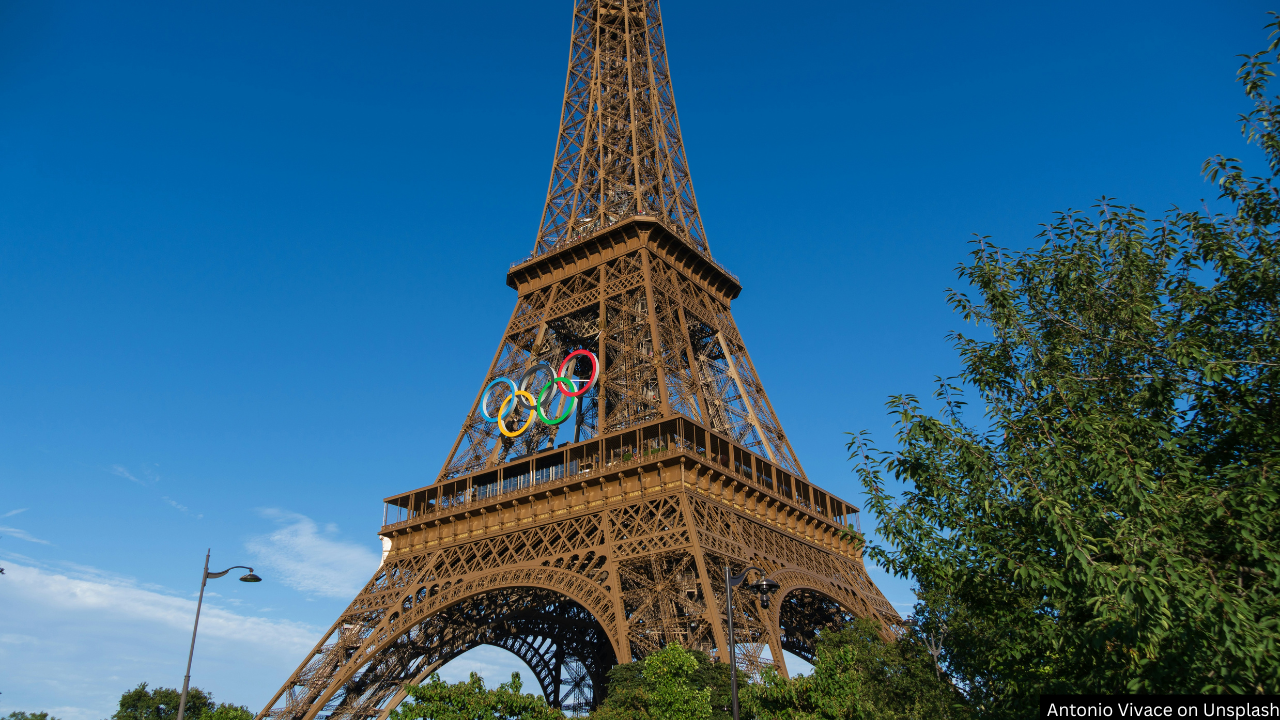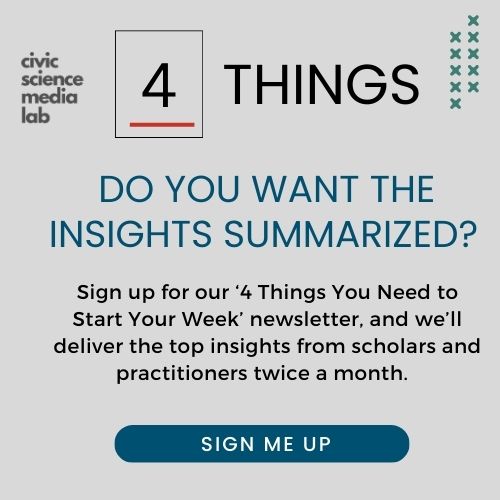Civic Science Times
The 2024 ASTC conference starts on Sept 27: Here’s what to expect

Starting on September 27, 2024, the Association of Science and Technology Centers (ASTC) will host its annual conference in Chicago that will gather science-engagement professionals to discuss the latest trends in public engagement. The conference program utilizes session tracks and engagement tags to assist attendees in navigating the diversity of engagement opportunities provided by the conference. Session tracks include trends and innovation, leadership and direction, community and partnerships, and several more.
The ASTC mentions that “this year’s sessions span timely topics like AI, inclusion and accessibility, and planetary health, as well as core science engagement issues and practice.” They further state that this year’s week long conference will “highlight the diverse array of ASTC members in the Chicago area,” including local institutions such as the Field Museum, Adler Planetarium, and Griffin Museum of Science and Industry. Attendees will have the chance to explore these organizations through sessions, site visits, and collaborative events.
One of the conference’s special features is the preconference intensives, which offer in-depth workshops such as Make_X: Engaging the Creativity of the Individual, Exploring and Planning for Digital Immersive Exhibits at Your Museum, and Evaluation and Educator Leadership in Museum Makerspaces. These highly interactive sessions provide focused learning and networking opportunities before the main conference.
Engagement tags categorize sessions by their format and level of participation thus providing an additional layer of navigation for those attending the conference which is jam packed with sessions. For example, experiential sessions involve hands-on activities, while group discussions encourage active audience participation. Hands-on showcases offer short, interactive demonstrations, and lightning sessions group quick presentations on specific topics. Other formats include panels, poster presentations, and solution labs, ensuring that attendees can engage in ways that suit their learning preferences.
How many sessions can participants navigative? Well, there will be a total of 8 lightning sessions across diverse topics such as Teens and Youth Engagement with talk titles such as Beyond Workforce Development: Using STEM to Foster Youth Leadership and Advance Social Justice, Youth Volunteers: Engagement Beyond the Galleries, and Using Unique Field Experiences to Introduce Diverse Audiences to STEM Fields.
There will be a total of 55 posters with titles such as Building Insights Through Observation: An Arts-Based Model for Building STEM Data Literacy, From Deep Space to the Deep Sea: Incorporating Current Research into Education and Exhibit Programs, and Leveraging Community Expertise to Advance Sustainability Goals.
A total of 32 panels will take place with titles such as Leading with the Arts: Centering Arts-Based Methods for Deeper Science Learning and Navigating Methods for Integrating Community Knowledge and Values into Museum Practice.
The list is long, but in summary, there will be 18 experiential sessions, 8 solution labs, 9 hands-on showcases, 16 preconference intensives, and 24 group discussions. The conference will clearly offer something for everyone, with energy and excitement pretty much guaranteed.
The Big Picture
The ASTC conference is part of a broader community of dedicated public engagement conferences that aim to strengthen connections between science engagement scholars, practitioners, and other stakeholders. Other conferences include SciTalk by the Association of Science Communicators, Public Communicaton for Science and Technology, National Science Policy Network, and ComSciCon, which share missions that overlap around fostering learning, networking, and collaboration across their respective areas within the broader civic science landscape.
However, these conferences face many challenges, most notably around funding to host them and ensure that they remain accessible to all. Tracking the impact over the long term and publishing the insights is also a challenge. For attendees, navigating and prioritizing conferences on the growing list of conferences is also a challenge. Ultimately, how the ecosystem of public engagement conferences continues to evolve will be important for scholars to keep tracking and studying.
Civic Science Times
Opinion: A missed opportunity for science communication at the 2024 Olympics?

The Summer 2024 Olympics in Paris captivated the world as it was the first one that welcomed large crowds after the delayed 2020 Tokyo games. The Olympics generated double the traffic to media outlets compared to the 2020 games and incorporated AI and technology to support their athletes. However, despite these improvements there was a missed opportunity to include scientists and science communicators in their broadcasting efforts to enhance engagement with the public audience.
The Paris 2024 games were also unique in that they were the first that AI and big data were incorporated by the International Olympics Committee (IOC) as a part of the Olympic AI agenda. This is a part of the Olympic AI agenda launched in April 2024 that has five focus areas — supporting athletes, ensuring equal access to AI benefits, optimizing games operations, growing engagement with people, and increasing management efficiency for the IOC.
“AI can help to identify athletes and talent in every corner of the world. AI can provide more athletes with access to personalised training methods, superior sports equipment and more individualised programmes to stay fit and healthy. Beyond sporting performance, AI can revolutionise judging and refereeing, thereby strengthening fairness in sport. AI can improve safeguarding in sport. AI will make organising sporting events extremely efficient, transform sports broadcasting and make the spectator experience much more individualised and immersive.” — Thomas Bach, IOC President at an interactive event launching the AI Agenda
Science communication has increased in popularity particularly on TikTok. Since 2021, 15 million STEM related videos have been published globally and 33% of the US community is engaging with similar content on their dedicated feed. With the integration of AI and new technology into major sporting events there should be people who understand the science behind it and can share that with the decision makers and the public.
Incorporating science communicators and scientists could have enhanced viewing experiences for audiences. Science communicators could provide data driven analyses of the Olympic sporting events to increase civic science engagement but also trustworthiness of the broadcast.
For example, Simone Biles, a popular athlete and captain of the US women’s gymnastics team, has had the physics of her routines analyzed on platforms such as NPR. Having a similar analysis incorporated into the main broadcast of the women’s gymnastics team could have increased the impact and significance of the historic nature of her skillset.
@wired Today, Simone Biles is leading #TeamUSA into the Women's Artistic Team All-Around #Gymnastics finals in hopes of clinching a gold medal. But as the #GOAT of gymnastics, it's worth taking a closer look at the incredible #physics of Simone Biles' Yurchenko Double Pike, dubbed the 'Biles II' which she'll be showcasing today. @rhettallain0, associate professor of physics at Southeastern Louisiana University breaks it down. #yurchenkodoublepike #bilesII #simonebiles #parisolympics #olympics ♬ original sound – WIRED.COM
“Science and technology are — they’re a big part of our sport. All the athletes are wearing, you know, some type of a smart device on them. And sometimes it’s multiple devices that measure multiple different things. I would say the most basic is just a smartwatch or a computer that they put on their bikes. Those things then upload into software that we have online that analyzes everything.” — Ryan Bolton, Triathlon Coach in an interview with Scientific American.
Science and technology are nothing new to the Olympic athletes and their coaches. In fact, it seems that athletes and coaches rely on having their own personal data to improve their performance. Seeing as this is already incorporated into the Olympic games, this presents an opportunity to provide paid positions for scientists, science communicators, and practitioners to participate in sharing this knowledge with the public.
How can scientists, science communicators, and other practitioners have a greater role in mainstream media? Audiences are clearly seeing and engaging with STEM related content on social media. What are sources of funding that can be explored to provide these opportunities? What data and research is necessary to show the significance of having science communication be a part of major sporting events?
-
Civic Science Times1 month ago
What is the case for and against a central repository for awarded grants in public engagement with science?
-
Civic Science Times4 weeks ago
An ethics-based approach to fostering STEM Identity: A look into the Loyola University Chicago Dana Program for Neuroscience and Society
-
CivicSciTV - Questions of the Day1 month ago
Bridging the Flood Risk Info Gap: Insights from a Journalist-Scientist Collaboration in Louisiana
-
CivicSciTV - Perspective1 month ago
Yamilee Toussaint realized STEM needs what dance provides & made that leap happen for girls



















